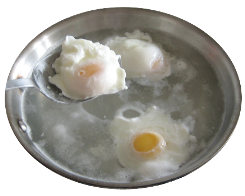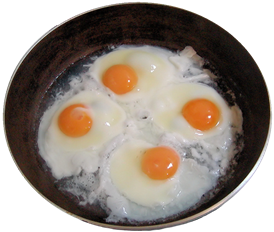All sterilization methods can be divided into two categories: sterilization that uses heat as a killing agent and sterilization that uses non-heat methods. Each method has its strengths, weaknesses and a specific field of application.
Heat Methods

The idea behind the heat methods is that organisms, like any living creature, survive in a reasonable temperature. When exposing a microorganism to heat you are damaging its living material and it will die.
Heat can cause the death of living organisms in two ways: Coagulation and Oxidation. Go to your kitchen, take a pot with boiling water and drop an egg inside. As the water heats up the egg becomes white; then it starts to stick together and becomes hard. This is coagulation and it happens at 52 °C.

Now take the second egg and fry it in a pan. First it will also become white, but when continuing frying, the sides will start turning black and it will burn. The burning happens at much higher temperatures than coagulation and it's called oxidation. As Harry Truman once said: "If you can't stand the heat, get out of the kitchen."
Common heat methods are: Open flame, incineration, steam under pressure and dry heat. We will dedicate a post to explain each method in depth. Non heat methods are also divided into subcategories by the killing agent which can be chemicals, gas or radiation.
In the next post we'll discuss sterilization methods that use heat as the sterilizing agent, Including: Flaming, incineration and sterilization by dry heat. We'll dedicate two posts to steam. The first post will explain how steam under pressure works. The second post will explain why saturated steam is ideal for sterilization. After all this is our specialty.

